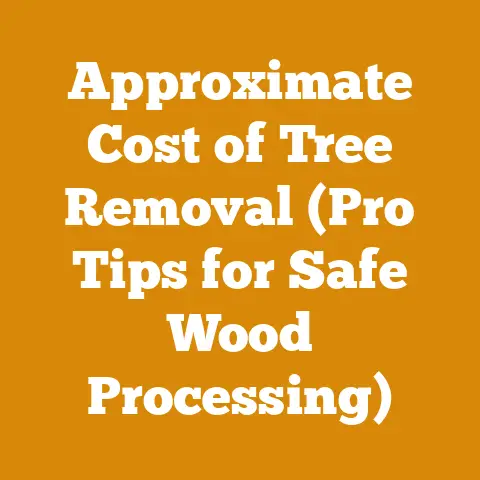Carpenter Bee Lure Recipe (5 Proven Woodworking Pest Hacks)
Understanding the Carpenter Bee Threat: A Woodworker’s Perspective
Carpenter bees, unlike honeybees, are solitary creatures.
The females bore into wood to create nests for their offspring.
While they don’t eat the wood, the tunnels they create can weaken structural integrity and leave unsightly holes.
As a woodworker, I’ve seen firsthand the damage they can inflict, particularly on softwoods like pine, cedar, and redwood.
This damage isn’t just aesthetic; it can compromise the strength of your projects, leading to costly repairs or even complete replacements.
The Financial Impact of Carpenter Bee Damage
Ignoring carpenter bee infestations can lead to a domino effect of expenses:
- Material Replacement: Damaged lumber needs to be replaced, increasing your material costs.
- Repair Costs: Fixing structural damage can be expensive, especially if you need to hire a professional.
- Loss of Time: Dealing with infestations takes time away from your actual woodworking projects.
- Reduced Project Lifespan: Weakened wood means your projects won’t last as long.
Therefore, proactive pest control isn’t just about protecting your wood; it’s about protecting your woodworking budget.
Carpenter Bee Lure Recipe: The Science Behind the Sting (and the Savings!)
The key to an effective carpenter bee lure is mimicking the pheromones that attract them.
Here’s a simple, proven recipe you can make at home:
Ingredients:
- 1 cup Boric Acid Powder (approximate cost: $5-10 per pound)
- 1 cup Water
- 1/2 cup Sugar (approximate cost: negligible)
- Old, untreated wood (pine or cedar scraps are ideal)
- Empty plastic bottle or container with a small opening.
Instructions:
- Mix the Solution: In a container, dissolve the boric acid and sugar in water.
Stir until completely dissolved. - Soak the Wood: Submerge the wood scraps in the solution for at least 24 hours.
This allows the wood to absorb the sweet, boric acid-infused mixture. - Assemble the Lure: Place the treated wood scraps inside the plastic bottle or container.
The opening should be large enough for carpenter bees to enter. - Placement is Key: Hang the lure near areas where you’ve noticed carpenter bee activity.
Sunny, sheltered locations are ideal.
Why this works: The sugar attracts the bees, while the boric acid acts as a slow-acting poison.
The untreated wood mimics the natural nesting material, drawing them in.
Cost Breakdown:
The cost of this lure is minimal, primarily the cost of the boric acid.
A pound of boric acid can make several lures, making it a very cost-effective solution.
1. Surface Treatments: The First Line of Defense
Applying protective coatings to your wood surfaces is an effective way to deter carpenter bees.
Oil-based paints and stains are generally more effective than water-based options.
- Oil-Based Paints: Create a physical barrier that makes it difficult for bees to bore into the wood.
Expect to pay around $30-50 per gallon for quality exterior paint. - Stains with Insecticides: Some stains contain insecticides that repel carpenter bees.
These can be more expensive, ranging from $40-60 per gallon, but offer added protection. - Borate Wood Preservatives: These preservatives penetrate the wood and make it unpalatable to insects.
A gallon of borate wood preservative typically costs between $35-$55.
Cost Considerations: The cost of surface treatments depends on the size of your project and the type of product you choose.
Factor in the cost of brushes, rollers, and any necessary surface preparation materials.
2. Wood Hardening Techniques: Making Your Lumber Less Appealing
Carpenter bees prefer softwoods.
Hardening the wood’s surface can make it less attractive to them.
- Wood Hardening Solutions: These solutions penetrate the wood fibers and increase their density.
Prices range from $20-40 per quart. - Heat Treatment: Applying heat to the wood can alter its structure and make it less susceptible to insect damage.
This is typically done on a larger scale by lumber suppliers.
Cost Considerations: Wood hardening solutions are relatively inexpensive, but the effectiveness varies depending on the type of wood and the severity of the infestation.
Heat treatment is generally not feasible for small-scale woodworking projects.
3. Filling Existing Holes: Sealing the Deal
If you already have carpenter bee holes, it’s important to fill them to prevent further damage.
- Wood Putty: A cost-effective option for filling small holes.
Prices range from $5-10 per container. - Epoxy Fillers: More durable than wood putty, especially for exterior applications.
Expect to pay around $20-30 per container. - Wooden Dowels: A more traditional approach, where you plug the holes with wooden dowels and glue them in place.
The cost depends on the type of wood and the size of the dowels.
Cost Considerations: The best option depends on the size and number of holes.
For extensive damage, epoxy fillers or wooden dowels may be the more durable choice.
4. Ultrasonic Pest Repellers: The High-Tech Approach
Ultrasonic pest repellers emit high-frequency sound waves that are said to deter carpenter bees.
- Cost: Prices range from $20-50 per unit.
- Effectiveness: The effectiveness of ultrasonic pest repellers is debated.
Some users report positive results, while others see no difference.
Cost Considerations: While relatively inexpensive, the effectiveness of ultrasonic pest repellers is questionable.
It’s best to consider them as a supplementary measure rather than a primary defense.
5. Natural Repellents: A Chemical-Free Alternative
Several natural substances are known to repel carpenter bees.
- Citrus Oils: Carpenter bees dislike the scent of citrus.
Spraying citrus oil solutions around your woodworking area can help deter them.
The cost is approximately $10-15 per bottle. - Almond Oil: Similar to citrus oils, almond oil is believed to repel carpenter bees.
- Diatomaceous Earth: This natural powder can be sprinkled around areas where carpenter bees are active.
A bag of diatomaceous earth typically costs around $15-25.
Cost Considerations: Natural repellents are a cost-effective and environmentally friendly option.
However, they may need to be reapplied frequently, especially after rain.
Budgeting for Carpenter Bee Control: A Proactive Approach
Integrating pest control into your woodworking budget is essential.
Here’s a breakdown of the factors to consider:
Estimating the Cost of Prevention
- Lumber Selection: Choosing hardwoods over softwoods can reduce the risk of carpenter bee damage, but hardwoods are generally more expensive.
- Surface Treatments: Factor in the cost of paint, stain, or wood preservatives.
- Lure Materials: The cost of boric acid and other lure ingredients.
- Application Tools: Brushes, rollers, sprayers, etc.
- Labor: If you’re hiring someone to apply treatments or make repairs, factor in their hourly rate.
Contingency Planning for Infestations
- Inspection Costs: If you suspect an infestation, you may need to hire a professional to inspect your property.
- Treatment Costs: If you need to hire a pest control company, get quotes from multiple providers.
- Repair Costs: Estimate the cost of repairing any existing damage.
- Replacement Costs: If lumber needs to be replaced, factor in the cost of new materials.
Example Budget Allocation
Let’s say you’re building a wooden deck using pressure-treated pine.
Here’s a possible budget allocation for carpenter bee control:
- Lumber: $1,000
- Surface Treatment (Stain with Insecticide): $100
- Lure Materials: $10
- Application Tools: $20
- Contingency Fund (for potential repairs): $100
Total Budget: $1,230
This example shows how incorporating a small percentage of your budget for pest control can save you significant costs in the long run.
Data-Driven Insights: Regional Timber Prices and Pest Control Costs
Understanding regional variations in timber prices and pest control costs is crucial for accurate budgeting.
Timber Prices
- Global Timber Market: Timber prices fluctuate based on supply and demand, economic conditions, and environmental factors.
The Forest Products Market Review provides detailed information on global timber trends. - Regional Variations: Timber prices vary significantly depending on the region.
For example, pine lumber is generally cheaper in the Southeastern United States than in the Pacific Northwest.
The USDA Forest Service publishes regional timber price reports. - Wood Species: Hardwoods like oak and maple are typically more expensive than softwoods like pine and cedar.
Pest Control Costs
- National Averages: The national average cost for carpenter bee treatment is around $300-500, according to HomeAdvisor.
- Regional Variations: Pest control costs vary depending on the location, the severity of the infestation, and the type of treatment used.
- DIY vs.
Professional: DIY pest control is generally cheaper, but professional services offer expertise and guaranteed results.
Case Study: Firewood Preparation and Pest Control
As someone who also prepares firewood, I’ve learned that even seasoned firewood can be susceptible to pests if not stored properly.
I once invested in a large quantity of oak firewood, only to discover a significant carpenter ant infestation.
The cost of treating the infestation and replacing the damaged wood significantly impacted my profit margin.
This experience taught me the importance of:
- Proper Storage: Storing firewood off the ground and away from structures.
- Regular Inspections: Checking firewood for signs of pests.
- Preventative Treatments: Applying borate wood preservatives to the firewood.
Optimizing Costs: Smart Strategies for Woodworkers
Here are some practical tips for optimizing your pest control costs:
- Early Detection: The earlier you detect an infestation, the easier and cheaper it will be to treat.
- DIY Solutions: DIY pest control can be cost-effective, but be sure to follow instructions carefully and use appropriate safety precautions.
- Comparison Shopping: Get quotes from multiple pest control providers before hiring someone.
- Preventative Measures: Investing in preventative measures can save you money in the long run.
- Wood Selection: Choose wood species that are naturally resistant to pests.
- Proper Storage: Store lumber and finished projects in a dry, well-ventilated area.
Calculations and Formulas: Estimating Wood Volume and Drying Time
Understanding how to calculate wood volume and drying time can help you optimize your wood processing and reduce the risk of pest infestations.
Calculating Wood Volume
Board Feet: A board foot is a unit of measurement for lumber equal to 144 cubic inches (12 inches x 12 inches x 1 inch).
The formula for calculating board feet is:(Thickness (inches) x Width (inches) x Length (feet)) / 12
Cords: A cord is a unit of measurement for firewood equal to a stack of wood 4 feet high, 4 feet wide, and 8 feet long.
The formula for calculating the volume of a cord is:Height (feet) x Width (feet) x Length (feet) = Volume (cubic feet)
Volume (cubic feet) / 128 = Number of Cords
Estimating Drying Time
- Moisture Content: The moisture content of wood is the percentage of water in the wood.
Drying Time: The drying time of wood depends on the species, thickness, and environmental conditions.
A general rule of thumb is that wood will dry at a rate of 1 inch per year in air-drying conditions.Drying Time (years) = Thickness (inches)
However, this is just an estimate.
Factors like humidity, temperature, and airflow can significantly affect drying time.






